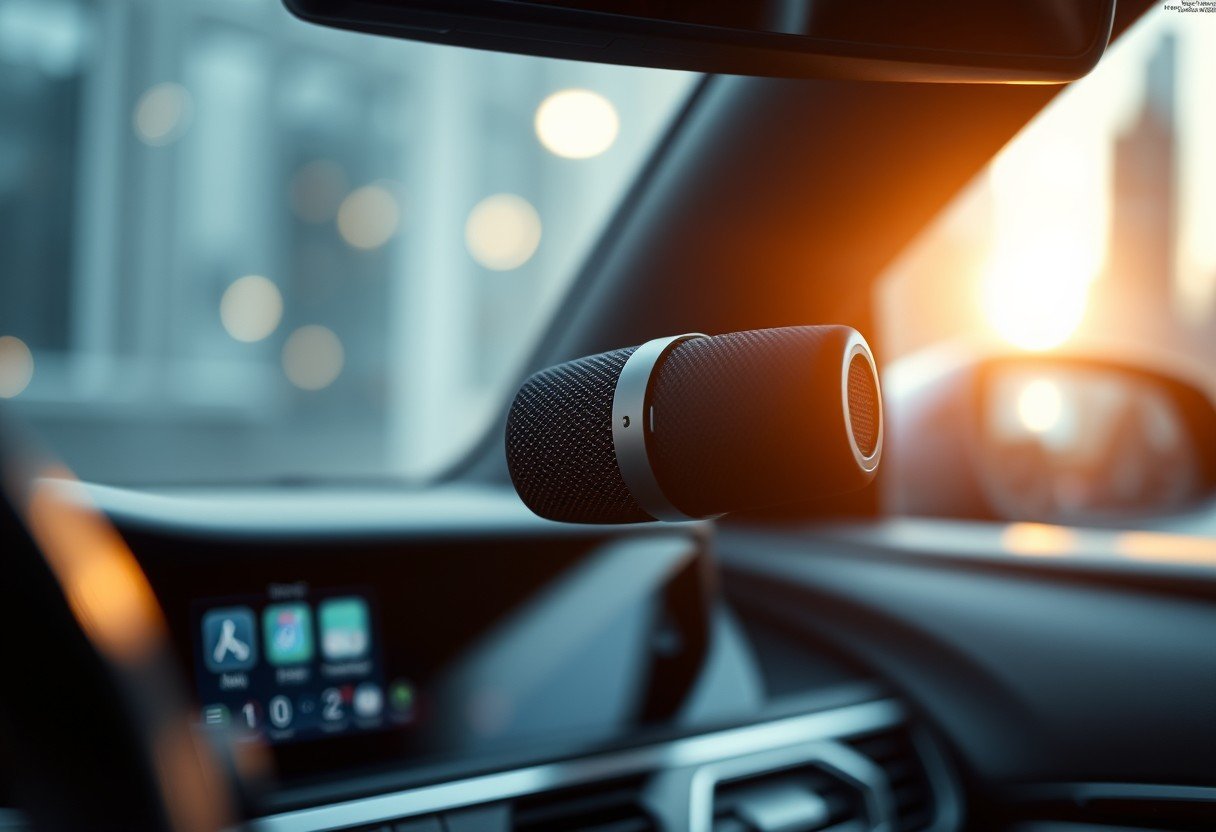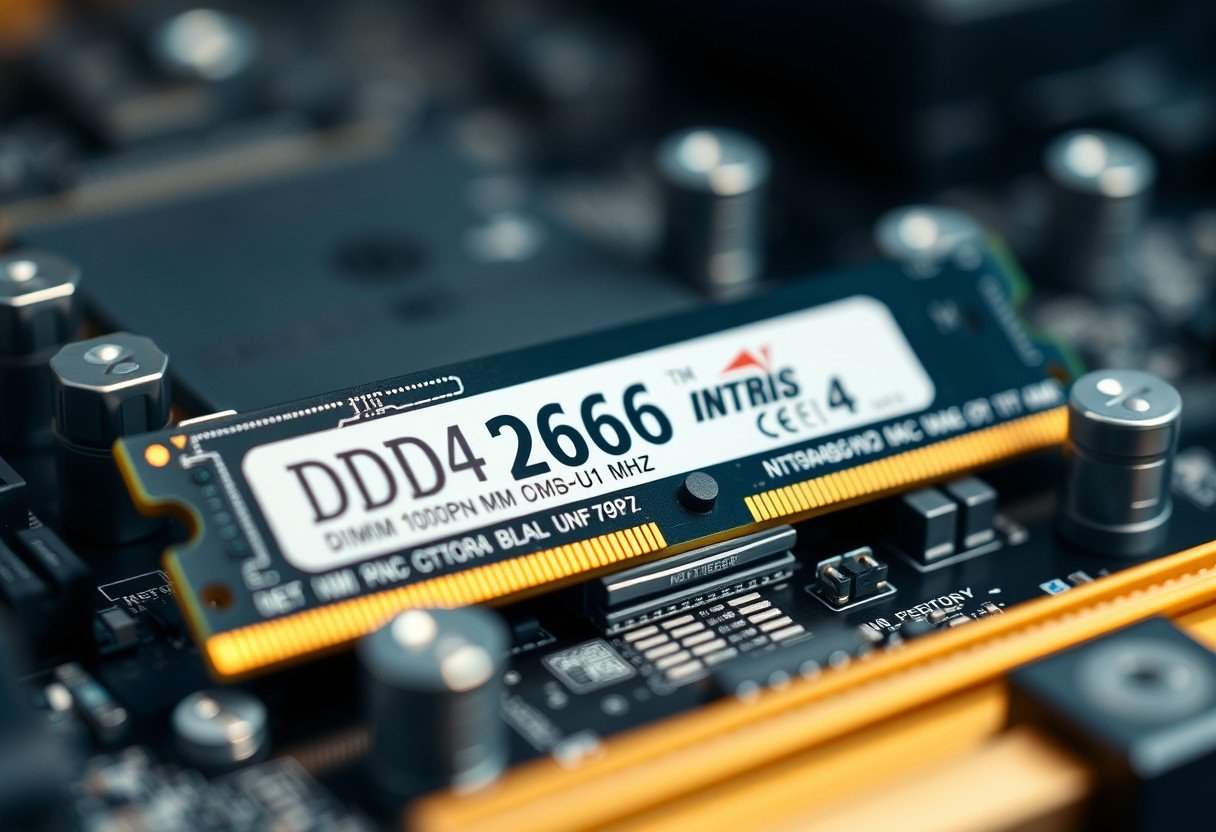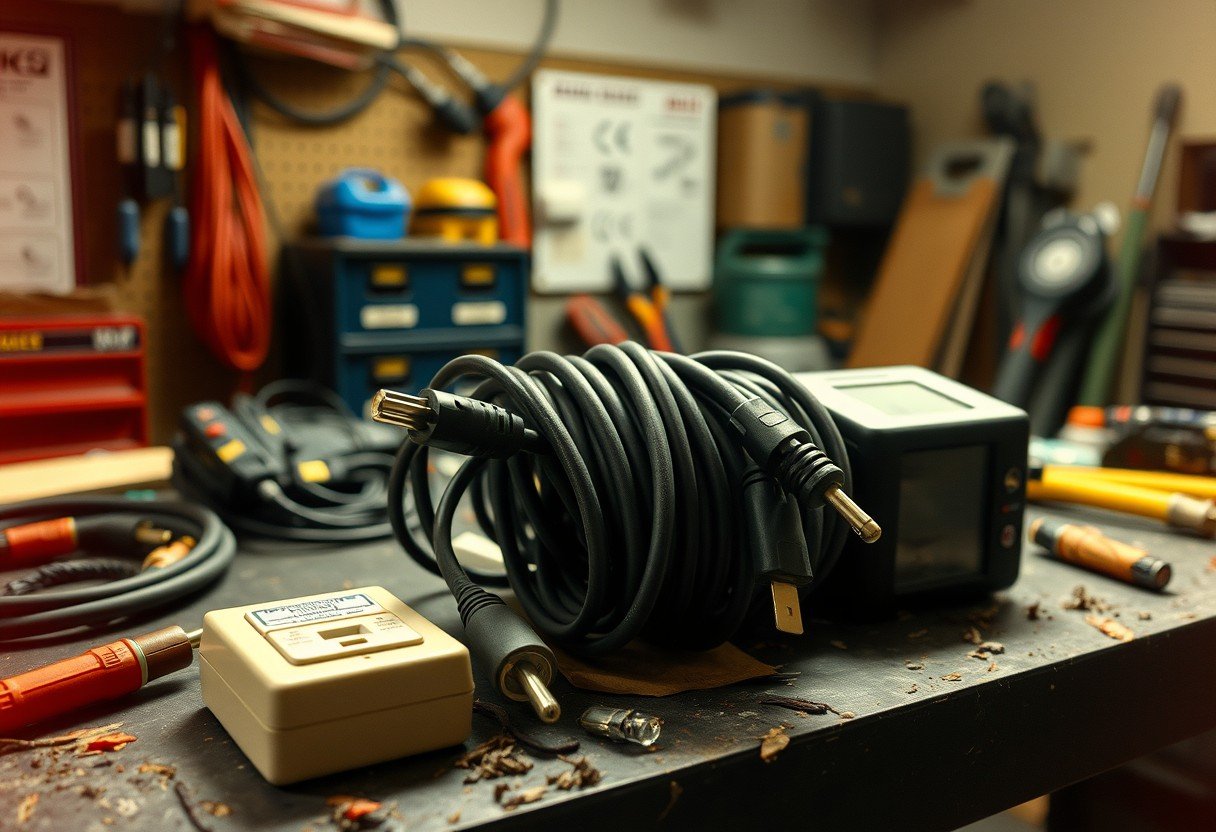Using a microphone in your car enhances safety and convenience, allowing you to make hands-free calls, use voice commands, and navigate without taking your eyes off the road. Understanding the different types, proper placement, and how to connect them is key to getting clear audio. This guide explains everything you need to know to choose and install the perfect microphone for your vehicle, ensuring a better and safer driving experience.
What are the Different Types of Microphones for a Car?
The first step in upgrading your car’s audio is choosing the right type of microphone. Not all mics are created equal, and the best one for you depends on what you plan to use it for, whether it’s simple phone calls or high-quality voice commands. Each type has unique characteristics suited for the noisy environment of a vehicle.
For example, some microphones are built to be rugged and resist background noise, while others are designed to capture every detail of your voice with high sensitivity. Knowing the difference will help you make an informed decision and avoid the frustration of a microphone that can’t hear you over the engine or road noise. Making the right choice from the start ensures your voice is heard clearly every time.
Here is a breakdown of common microphone types you might consider for your car setup:
| Microphone Type | Best For |
| Dynamic Microphones | Vocal applications and reducing background noise. |
| Condenser Microphones | Capturing detailed, high-quality audio for calls. |
| Electret Microphones | Compact, built-in systems where space is limited. |
| Lavalier Microphones | Discreet, hands-free use clipped onto clothing. |
Condenser microphones are a popular choice for their exceptional sensitivity, which allows them to capture your voice clearly for hands-free calling. Dynamic microphones, on the other hand, are excellent at filtering out ambient noise, making them a great option for louder vehicles.
Why a Good Microphone is a Safety Feature
Many drivers overlook the safety benefits of a high-quality microphone system. Beyond just clearer phone calls, a good microphone is a crucial part of your car’s safety features. It enables reliable voice-activated controls, which are essential for modern driving.
When you can control navigation, adjust climate settings, or make calls without taking your hands off the wheel, you significantly reduce distractions. This seamless integration fosters safer driving habits and allows you to stay focused on the road. Some advanced systems can even use voice commands to activate emergency features, adding another layer of protection for you and your passengers.
With a responsive microphone, your car can understand your commands quickly and accurately. This minimizes the time your attention is diverted from driving, reducing the risk of accidents. It transforms your interaction with the vehicle from a manual task to a simple conversation.
How to Install a Car Microphone for the Best Sound
Proper installation is just as important as the microphone itself. Where you place the microphone can dramatically affect its performance. A well-placed mic captures your voice clearly, while a poorly placed one will pick up wind, vibrations, and other unwanted sounds.
The ideal location is typically near the driver’s head, such as on the sun visor, rear-view mirror, or A-pillar. This spot is close enough to capture your voice without being obstructed. Most importantly, it keeps the microphone out of your direct line of sight so it doesn’t become a distraction.
When placing your microphone, be sure to avoid certain areas to prevent poor audio quality:
- Near open windows or air conditioning vents, which create wind noise.
- Directly on the dashboard, where it can pick up engine vibrations.
- Behind objects or deep in crevices where your voice can be muffled.
Wiring is the final piece of the puzzle. Run the cable from the microphone to your car’s head unit or Bluetooth system. Always use high-quality cables and secure them neatly along existing wiring harnesses with zip ties. This prevents the wire from getting snagged on moving parts and ensures a reliable connection for years to come.
Ensuring Compatibility with Your Vehicle’s System
Before you buy a microphone, you must confirm it will work with your car. Vehicles have specific audio and communication systems, and not all microphones are universally compatible. Checking for compatibility with your car’s make and model will save you from installation headaches.
If your car has built-in Bluetooth, look for a microphone that supports the same Bluetooth version. This ensures a stable connection and crystal-clear audio quality for both calls and voice commands. A mismatch can lead to dropped connections or poor sound.
Your microphone also needs to integrate with your navigation and infotainment systems. A compatible mic allows you to use voice commands to control your GPS, change music, and access other apps safely. Look for models with noise cancellation and enhanced voice recognition for the best results in noisy car environments. This technology helps the system understand you correctly, even when you’re driving on the highway.
Simple Maintenance to Keep Your Mic Working Perfectly
Car microphones are generally low-maintenance, but a few simple checks can keep them performing at their best and extend their lifespan. Over time, dust, debris, and loose connections can degrade sound quality. Being proactive helps you avoid common problems.
Some of the most common issues include poor audio quality, static or interference, and the microphone not working at all. These problems are often caused by a loose wire, dirt blocking the microphone’s grille, or software glitches in your car’s infotainment system.
Following a simple maintenance routine can prevent most of these issues. It only takes a few minutes every few months and ensures you can rely on your microphone when you need it most.
- Check Connections: Make sure all plugs and wires are securely connected to the microphone and the head unit.
- Clean the Microphone: Gently wipe the microphone’s exterior with a dry, soft cloth to remove any dust or debris.
- Test Audio Quality: Periodically make a test call or use a voice command to check if the audio is still clear.
- Update Software: If your microphone is part of an infotainment system, ensure its software is up to date.
The Future of Voice Control in Cars
Automotive microphone technology is evolving quickly. In the near future, interacting with your car will feel even more like having a natural conversation. Manufacturers are developing smarter systems that can understand complex sentences and respond more intuitively.
One of the biggest advancements is in environmental noise cancellation. Future systems will use multiple microphones placed around the cabin to identify and eliminate background noises like traffic, rain, and passengers talking. This technology will create a quiet bubble around the driver, ensuring voice commands are understood with near-perfect accuracy.
As these technologies improve, you will be able to control more of your car’s features with your voice. From complex navigation requests to adjusting interior lighting, the scope of voice control will expand, making driving safer and more enjoyable than ever before.
Frequently Asked Questions
What kind of microphone is best for hands-free calls in a car?
For hands-free calls, a condenser or lavalier microphone with noise-cancellation technology is often best. These mics are sensitive enough to pick up your voice clearly while filtering out road and engine noise, leading to better call quality for the person on the other end.
Can I install a new car microphone myself?
Yes, many external microphones are designed for easy DIY installation. These often clip onto a visor or stick to a surface and plug into your car’s stereo. However, for systems that require wiring into the car’s electronics, hiring a professional is recommended to ensure it’s done correctly and safely.
Will an external microphone really improve my call quality?
Absolutely. Factory-installed microphones are often placed in less-than-ideal locations and may lack advanced noise filtering. A quality external microphone placed closer to you will isolate your voice much more effectively, significantly improving how you sound to others.
Where is the best place to put a microphone in a car?
The best location is near the driver’s head but out of their line of sight. Common spots include the sun visor, the headliner near the rearview mirror, or on the A-pillar next to the windshield. Avoid placing it near air vents or windows to reduce noise interference.
Are there privacy risks with always-on microphones in cars?
Yes, any “always-listening” device carries potential privacy concerns. It is important to read the privacy policy of your vehicle or device manufacturer to understand how your voice data is stored and used. Many systems allow you to disable voice recording or data sharing features in the settings.









Leave a Comment